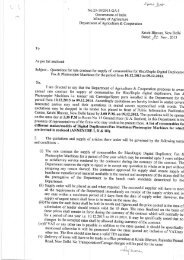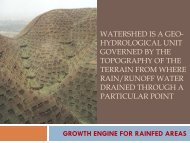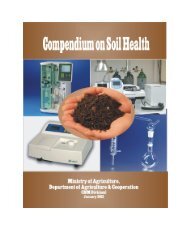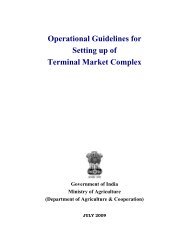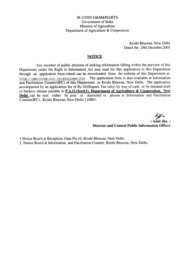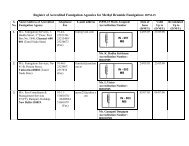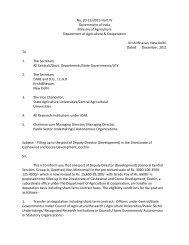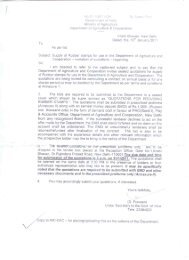canopy management in fruit crops - Department of Agriculture & Co ...
canopy management in fruit crops - Department of Agriculture & Co ...
canopy management in fruit crops - Department of Agriculture & Co ...
Create successful ePaper yourself
Turn your PDF publications into a flip-book with our unique Google optimized e-Paper software.
•<br />
•<br />
•<br />
•<br />
Dur<strong>in</strong>g removal <strong>of</strong> branches, first cut should be given on lower side <strong>of</strong> branch to give<br />
a smooth cut and avoid bark splitt<strong>in</strong>g.<br />
Protect branches with wide crotch angle as they are more productive.<br />
In bear<strong>in</strong>g mango trees, not more than 25% biomass should be removed at a time for<br />
better <strong>canopy</strong> <strong>management</strong>, otherwise it results <strong>in</strong> excessive vegetative growth.<br />
Under high density plant<strong>in</strong>g system, remove 10-15% biomass annually dur<strong>in</strong>g October-<br />
December to <strong>in</strong>crease light penetration <strong>in</strong>side the <strong>canopy</strong>. Removal <strong>of</strong> 10-15% biomass<br />
should <strong>in</strong>clude cris cross branches, dead wood and diseased shoots.<br />
Rejuvenation <strong>of</strong> Senile Orchards<br />
•<br />
•<br />
•<br />
•<br />
•<br />
•<br />
Identify senile orchards by survey and bear<strong>in</strong>g behaviour.<br />
Mark the branches which are to be removed.<br />
Mark those branches which are to be kept for future <strong>canopy</strong> development at an<br />
approximate height <strong>of</strong> 2.0 – 2.5 m from the ground.<br />
Head<strong>in</strong>g back operation should be done <strong>in</strong> November – December.<br />
At the time <strong>of</strong> head<strong>in</strong>g back, first cut should be given from underside <strong>of</strong> branch to<br />
avoid bark splitt<strong>in</strong>g.<br />
Good <strong>canopy</strong> <strong>in</strong> headed back trees<br />
•<br />
•<br />
•<br />
•<br />
In long and upright branches, head<strong>in</strong>g<br />
back can be done <strong>in</strong> two or more splits<br />
to avoid <strong>in</strong>convenience.<br />
Cut should be sharp and slant. It is very<br />
important.<br />
All the pruned wood should be removed<br />
from orchard after head<strong>in</strong>g back. This<br />
is required for mak<strong>in</strong>g <strong>of</strong> bas<strong>in</strong>s for<br />
fertilizer and water application. This<br />
should be completed by January.<br />
February is time for fertilizer application<br />
<strong>in</strong> headed back trees.<br />
Application <strong>of</strong> 2.5 kg urea, 3 kg s<strong>in</strong>gle superphosphate and 1.5 kg muriate <strong>of</strong> potash is<br />
recommended for each pruned tree. Half dose <strong>of</strong> urea with full <strong>of</strong> s<strong>in</strong>gle superphosphate<br />
Canopy Management <strong>in</strong> Fruit Crops 57



